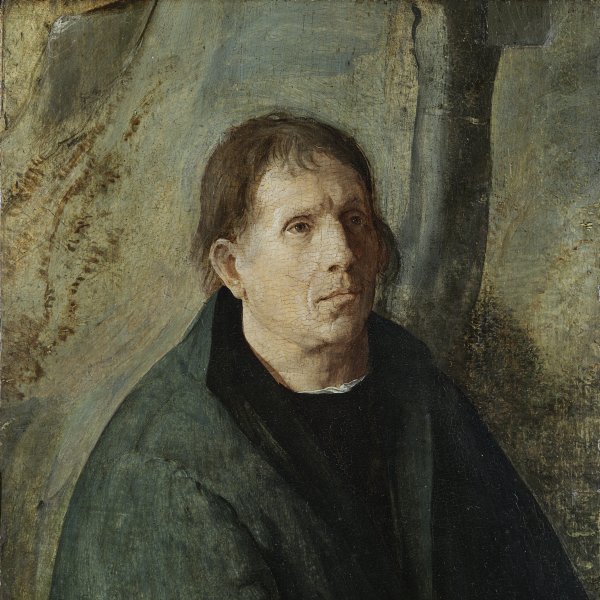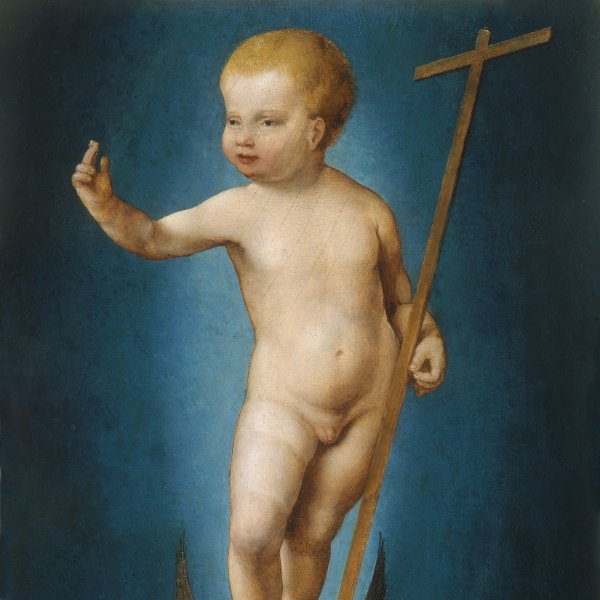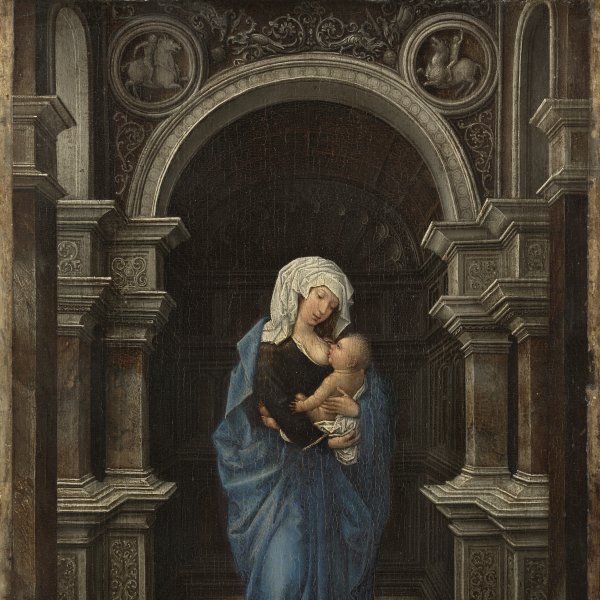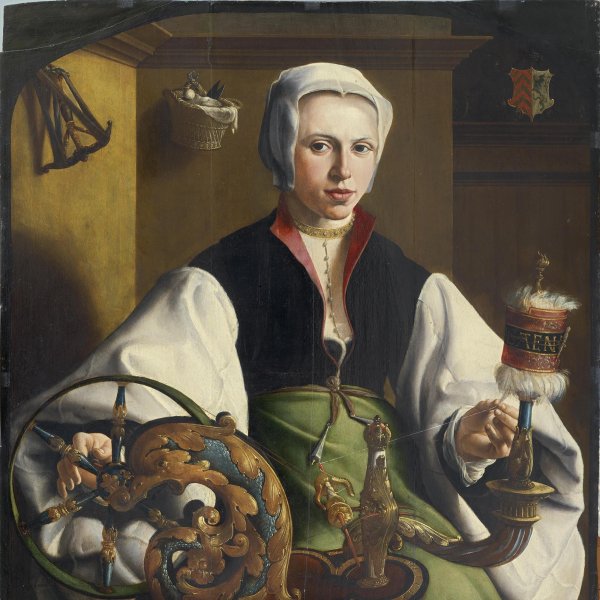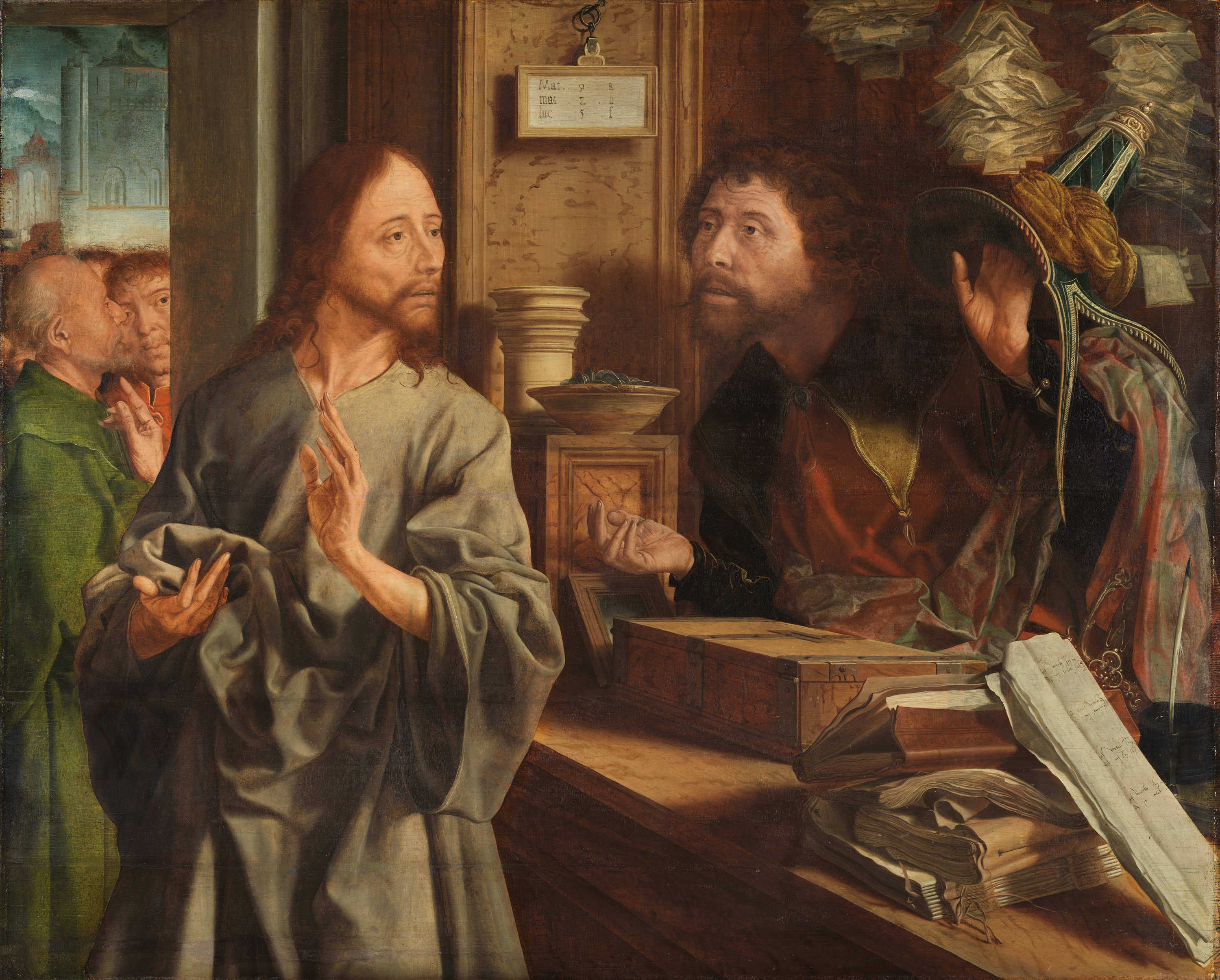The Calling of Saint Matthew
This Netherlandish artist has been identified as Marino di Sirissea or Marinus de Seeu, who adopted the name of his native city of Reymerswaele. The artist was a follower of Quentin Metsys and specialised in genre scenes. His work combines the influence of Metsys and of Albrecht Dürer in its realism and attention to detail with that of Leonardo da Vinci in certain caricatural aspects. The present panel depicts The Calling of Saint Matthew, which was one of Van Reymerswaele’s favourite subjects along with scenes of merchants and moneychangers. The principal figures, Christ and Saint Matthew, are located in the foreground and have particularly striking hands, painted in an exquisitely detailed and beautiful manner characteristic of this artist. The room in which the figures are located is filled with documents, piled up on the counter. They refer to Matthew’s profession before he converted to Christianity, while their inclusion takes the composition closer towards genre painting, in particular the still life.
NR
Van Reymerswaele’s range of subjects was limited and he generally focused on Saint Jerome in his study, the Calling of Saint Matthew, and scenes of money-changers and money-lenders, all known through various different versions. He depicted these subjects in interiors filled with a range of objects and details.
The Calling of Saint Matthew was one of the most popular subjects within the iconography of this saint as his occupation allowed for a wide range of different depictions of the theme. These interpretations almost inevitably placed more emphasis on genre elements than on the religious content. Among earlier artists to have depicted this episode was Carpaccio in 1502 for the church of San Giorgio degli Schiavoni in Venice. Carpaccio’s version, however, sets the scene in an exterior in front of a counter outside a shop and is thus completely different to the present composition.
In the present panel Van Reymerswaele constructs the scene around the two principal figures. Saint Matthew on the right seems to have already accepted Christ’s calling, rapidly picking up his sophisticated hat as he moves forward towards the counter. The standing Christ turns his head towards the future Evangelist with a more tranquil gesture. The right side of the interior is occupied by an area for storing documents, piled up in bundles on the shelves. Bound papers and parchments are also to be seen in the foreground on the counter. Another distinctive feature of the artist’s work is his manner of depicting hands and their importance in his compositions. Here they play an important role both for the significance of the gestures and the skilful way in which they are depicted, with their elegant proportions and very long, thin fingers. In other compositions they take on an almost claw-like appearance. This Calling of Saint Matthew is known in various versions now in museums.
Mar Borobia





